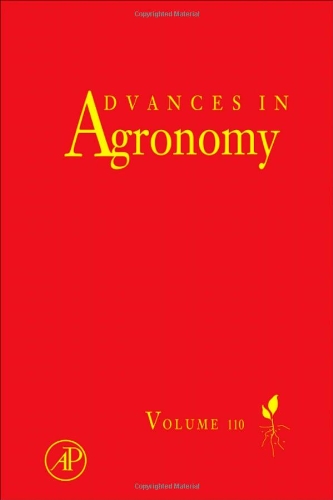

Most ebook files are in PDF format, so you can easily read them using various software such as Foxit Reader or directly on the Google Chrome browser.
Some ebook files are released by publishers in other formats such as .awz, .mobi, .epub, .fb2, etc. You may need to install specific software to read these formats on mobile/PC, such as Calibre.
Please read the tutorial at this link. https://ebooknice.com/page/post?id=faq
We offer FREE conversion to the popular formats you request; however, this may take some time. Therefore, right after payment, please email us, and we will try to provide the service as quickly as possible.
For some exceptional file formats or broken links (if any), please refrain from opening any disputes. Instead, email us first, and we will try to assist within a maximum of 6 hours.
EbookNice Team

Status:
Available4.3
37 reviews
ISBN-10 : 0123855314
ISBN-13 : 9780123855312
Author: Donald L. Sparks
Advances in Agronomy continues to be recognized as a leading reference and a first-rate source for the latest research in agronomy. As always, the subjects covered are varied and exemplary of the myriad of subject matter dealt with by this long-running serial.
Chapter 1: Dissolved Organic Matter
1 Introduction
2 Sources, Pools, and Fluxes of Dissolved Organic Matter in Soils
3 Properties and Chemical Composition of Dissolved Organic Matter in Soils
4 Mechanisms Regulating Dynamics of Dissolved Organic Matter in Soils
5 Factors Influencing Dynamics of Dissolved Organic Matter in Soils
6 Environmental Significance of Dissolved Organic Matter in Soils
7 Summary and Research Needs
Acknowledgments
References
Chapter 2: Genomic Selection in Plant Breeding
1 Introduction
2 Important Population and Trait Characteristics
3 Single Nucleotide Polymorphism Marker Discovery and Genotyping
4 Statistical Methods
5 GS Prediction Accuracies
6 Impact of Statistical Model on GEBV Accuracy
7 Modeling Epistasis and Dominance
8 GS in the Presence of Strong Subpopulation Structure
9 Long-Term Selection
10 Summary and Conclusions
References
Chapter 3: Differences of Some Leguminous and Nonleguminous Crops in Utilization of Soil Phosphorus
1 Introduction
2 The Difference of P Uptake Amounts of Leguminous and Nonleguminous Crops
3 Leguminous and Nonleguminous Crop Responses to Powdered Rock Phosphates
4 The Relation of Plants' Root Morphology to Their Capacity of Using Soil Sparingly Soluble P and Re
5 Microorganisms in Rhizosphere Soil and Their Function in Supplying P to Plants
6 Root Exudates (Substances Secreted from Roots) and the Plants' Capacity to Use Sparingly Soluble P
7 Effects of Root Cation Exchange Capacity and Calcium Uptake Amount of Crops on Soil P Absorption a
8 The Responses to P Fertilizer Between Leguminous and Cereal Crops with Their Biological Characteri
9 Factors Affecting the Responses of Leguminous and Nonleguminous Crops to P Fertilizer
10 Conclusions
Acknowledgments
References
Chapter 4: The Role of Mineral Nutrition on Root Growth of Crop Plants
1 Introduction
2 Root-Induced Changes in the Rhizosphere
3 Root Systems of Cereals and Legumes
4 Contribution of Root Systems to Total Plant Weight
5 Rooting Depth and Root Distribution
6 Root Growth as a Function of Plant Age
7 Root-Shoot Ratio
8 Root Growth Versus Crop Yield
9 Genotypic Variation in Root Growth
10 Root Oxidation Activity in Oxygen-Deficient Soils
11 Root Growth in Conservation Tillage Systems
12 Mineral Nutrition Versus Root Growth
13 Management Strategies for Maximizing Root Systems
14 Conclusions
Acknowledgments
References
Chapter 5: Physiology of Spikelet Development on the Rice Panicle
1 Introduction
2 Panicle Structure and Development
3 Panicle Architecture and Grain Yield
4 Physiological Factors Regulating Spikelet Development
5 Is Manipulation of Apical Dominance Crucial for Grain Yield Improvement?
6 Suggestions for Modification of Apical Dominance
journal of advances in agronomy and crop science
recent advances in agronomy
advances in agronomy impact factor
advances in agronomy journal
advances in agronomy impact factor 2024
Tags: Advances, Agronomy, Donald Sparks, agronomy